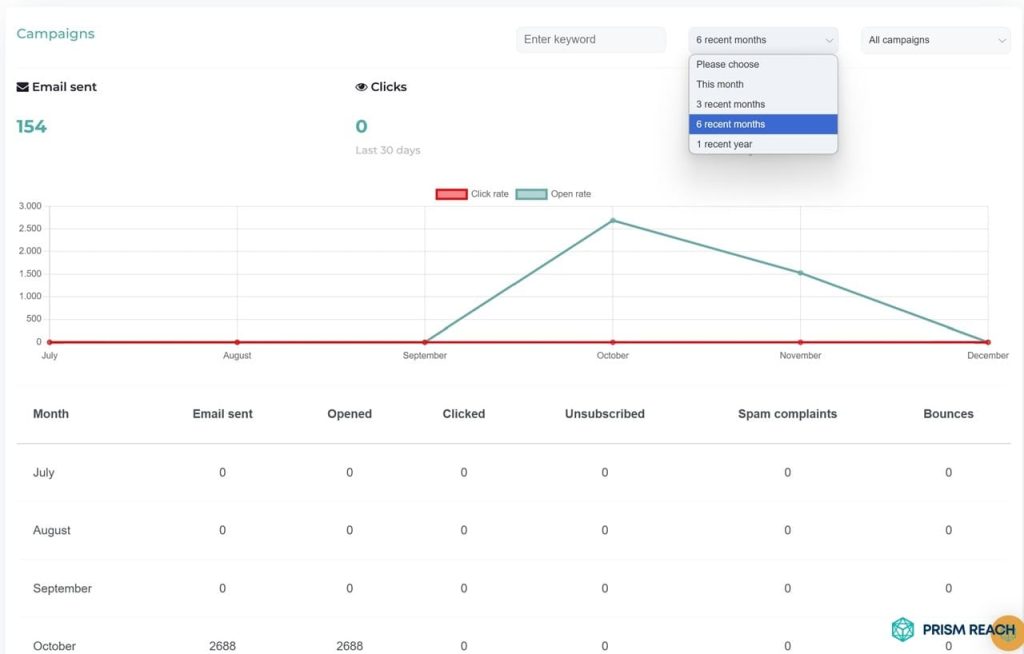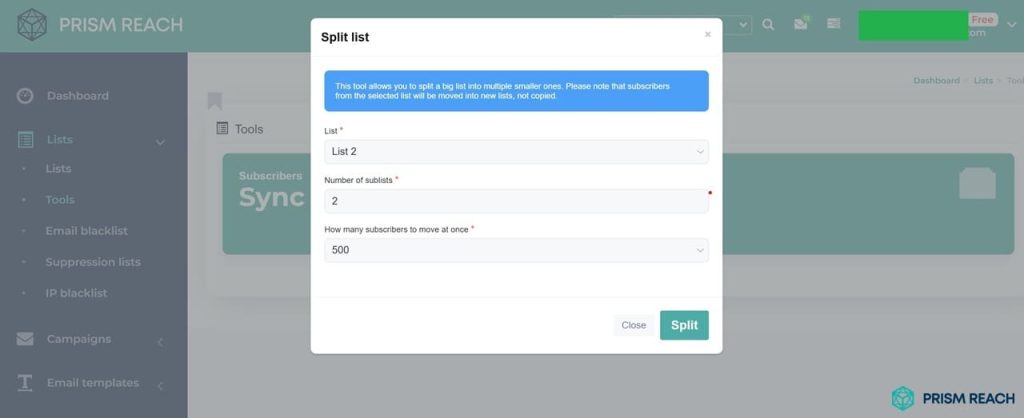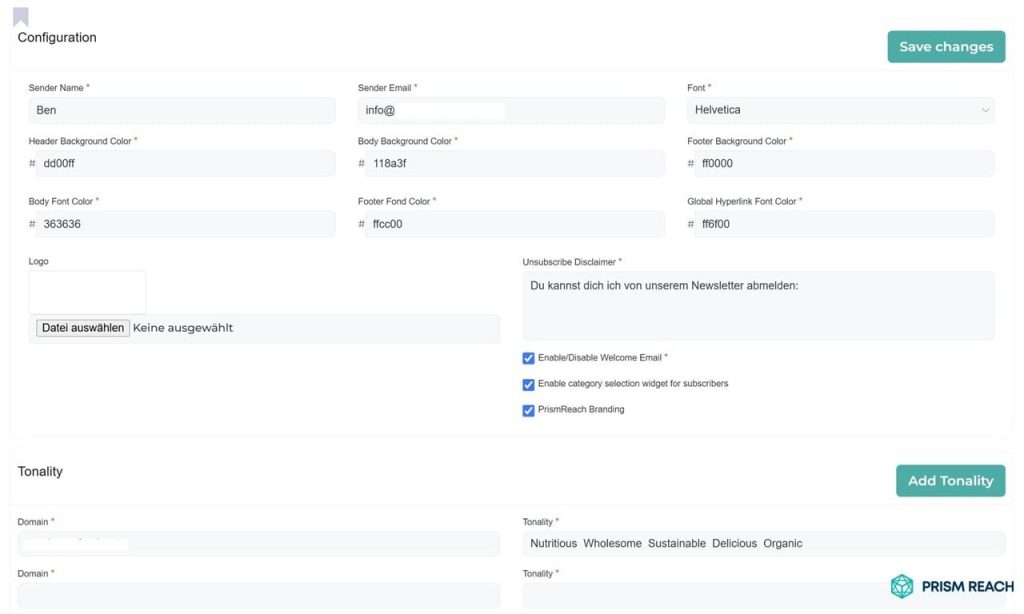Email marketing remains a cornerstone of successful business communication in today’s digital landscape. As we navigate through 2024, the importance of a well-structured email marketing calendar has never been more pronounced. With the rise of AI-driven personalization and the increasing demand for targeted content, marketers are seeking innovative ways to streamline their email campaigns and maximize engagement.
Creating an email marketing calendar is not just about scheduling; it’s about crafting a strategic roadmap that aligns with your business goals, respects your audience’s preferences, and leverages key dates and events to drive results. As the marketing world becomes more complex, a well-planned calendar serves as a crucial tool for maintaining consistency, ensuring relevance, and measuring success in your email marketing efforts.
Key Facts
- An email marketing calendar is a strategic planning tool that outlines the timing, content, and goals of your email campaigns over a specific period.
- According to a study by Litmus, companies that use email marketing calendars see a 38% increase in ROI compared to those that don’t.
- Implementing a structured email marketing calendar can lead to a 23% improvement in open rates and a 14% increase in click-through rates.

Creating Your Email Marketing Calendar: A Step-by-Step Guide
The process of creating an effective email marketing calendar begins with understanding your audience and setting clear objectives. “The key to a successful email marketing calendar is alignment with your overall marketing strategy,” says Sarah Johnson, Digital Marketing Strategist at EmailPro. “It’s not just about when you send emails, but why you’re sending them and what value they provide to your subscribers.”
Start by defining your goals for each campaign. Are you looking to increase sales, boost engagement, or nurture leads? Once you have a clear vision, follow these steps to create a comprehensive email marketing calendar:
1. Identify Key Dates and Events
Marking important holidays, industry events, and company milestones on your calendar is crucial for anchoring your campaigns. This step involves researching relevant dates that align with your business and audience interests. Consider national holidays, seasonal trends, and industry-specific events that could impact your email marketing strategy.
- National Holidays: Leverage holidays like Thanksgiving, Black Friday, or Christmas for themed promotions.
- Industry Events: Align your campaigns with major events in your industry, such as trade shows or product launches.
- Company Milestones: Celebrate anniversaries, product launches, or other significant company events with special email campaigns.
By identifying these key dates in advance, you can plan targeted campaigns that resonate with your subscribers at the right moments. This proactive approach allows you to create timely and relevant content, increasing the likelihood of engagement and conversion.
2. Determine Email Frequency
Deciding how often you’ll send emails is a critical aspect of your email marketing calendar. This decision should be based on your audience preferences, the nature of your business, and your available resources. Weekly, bi-weekly, or monthly frequencies are common, but the optimal cadence may vary.
- Audience Preferences: Conduct surveys or analyze engagement data to understand how often your subscribers want to hear from you.
- Business Nature: Determine the frequency based on the type of business and the nature of your offerings.
- Resource Availability: Ensure you have the resources to consistently produce quality content at your chosen frequency.
It’s important to strike a balance between staying top-of-mind and avoiding inbox fatigue. Consistency is key; once you establish a frequency, try to maintain it to set subscriber expectations. However, be prepared to adjust based on performance metrics and feedback.
3. Plan Content Themes
Developing themes for each month or quarter ensures your content remains fresh and relevant. This approach helps in creating a cohesive narrative across your email campaigns and prevents content fatigue. Start by brainstorming themes that align with your business goals, industry trends, and audience interests.
- Seasonal Themes: Tailor content to holidays, seasons, or significant dates (e.g., “Spring Savings” in April).
- Industry-Specific Topics: Address current trends or news within your industry to stay relevant.
- Product or Service Highlights: Focus on different aspects of your products or services each month.
Planning themes in advance allows for better resource allocation and content creation. It also helps in maintaining a consistent brand voice while exploring various topics. Remember to leave room for flexibility within your themes to accommodate current events or unexpected opportunities.
4. Segment Your Audience
Dividing your email list into segments based on demographics, behavior, or preferences is crucial for tailoring your messages effectively. This step involves analyzing your subscriber data to identify distinct groups within your audience.
- Demographics: Age, gender, location, and other demographic factors.
- Behavioral Segmentation: Purchase history, website interactions, and email engagement levels.
- Preference-Based Segmentation: Subscribers’ interests and content preferences.
By creating these segments, you can craft more personalized and relevant content for each group, increasing the likelihood of engagement and conversion. This targeted approach allows you to speak directly to the needs and interests of different subscriber groups, rather than sending one-size-fits-all messages.
5. Create a Content Matrix
Mapping out what type of content you’ll send to each segment and when is a crucial step in your email marketing calendar. This content matrix serves as a roadmap for your email campaigns, ensuring a balanced mix of promotional, educational, and newsletter content.
- Identify Content Types: Determine the types of content that resonate with your audience, such as product updates, industry news, how-to guides, or customer stories.
- Align with Segments: Match content types with the appropriate audience segments to ensure relevance.
- Balance Content: Maintain a mix of promotional and non-promotional content to keep subscribers engaged without feeling overwhelmed.
This structured approach helps in maintaining engagement across all segments while avoiding content overlap or repetition.
6. Set Performance Metrics
Establishing Key Performance Indicators (KPIs) for each campaign is essential to measure success and inform future strategies. Begin by identifying the metrics that align with your email marketing goals.
- Open Rates: Measure the effectiveness of subject lines and sender reputation.
- Click-Through Rates (CTR): Assess the relevance and appeal of email content.
- Conversion Rates: Directly tie email performance to business objectives, showing how effectively the campaign drives desired actions.
- Engagement Metrics: Include metrics like forward rates, social shares, and unsubscribe rates.
For each campaign in your calendar, set specific, measurable targets for these KPIs. This allows you to track the performance of individual campaigns and your overall email marketing strategy. Regular analysis of these metrics will help you identify trends, understand what resonates with your audience, and make data-driven decisions for future campaigns.
Consider using A/B testing to refine your approach and improve performance over time. Remember to review and adjust your KPIs periodically to ensure they remain aligned with your evolving business objectives.
7. Use a Calendar Tool
Utilizing a digital calendar or project management tool is crucial for visualizing your plan and collaborating with team members. This step involves selecting and implementing a tool that fits your team’s needs and workflow.
- Color-Coding: Implement a color-coding system to differentiate between content types (e.g., promotions, newsletters, educational content).
- Task Assignment: Assign specific tasks and deadlines to team members to ensure accountability and timely execution.
- Integration: Choose tools that integrate seamlessly with your email marketing platform for streamlined workflow.
- Feature Utilization: Utilize features like event attachments to link relevant documents or resources directly to each campaign entry.
A visual calendar helps in identifying gaps or overlaps in your email schedule and ensures all team members are aligned on upcoming campaigns. It also facilitates better resource allocation and deadline management.

Hidden Gem Strategies
In addition to the foundational steps, incorporating these five hidden gem strategies can further enhance your email marketing calendar, making it more organized, effective, and aligned with your overall marketing goals:
1. Incorporate a Theme for Each Month
Assigning a specific theme to each month helps unify your content and allows for deeper storytelling. For example, “Customer Appreciation” in April or “Spring Savings” in May can guide your content creation and ensure consistency across your campaigns.
- Benefits:
- Provides a cohesive narrative for your email campaigns.
- Makes content planning easier and more focused.
- Enhances brand storytelling and connection with subscribers.
- Implementation Tips:
- Brainstorm themes that align with your business goals and audience interests.
- Ensure themes are flexible enough to accommodate real-time events or changes.
- Communicate monthly themes clearly to your team to maintain alignment.
2. Utilize Color-Coding for Content Types
Implementing a color-coding system in your calendar helps differentiate between various content types, such as promotions, newsletters, and educational content. This visual cue ensures a balanced mix of content and prevents overloading subscribers with one type of message.
- Benefits:
- Enhances visual organization of your email schedule.
- Ensures a balanced and diverse content mix.
- Facilitates quick identification of content types at a glance.
- Implementation Tips:
- Assign specific colors to different content categories.
- Use consistent color codes across all months for easy reference.
- Incorporate color legends in your calendar tool for clarity.
3. Plan for A/B Testing
Scheduling specific campaigns dedicated to A/B testing different elements like subject lines, send times, or content formats allows you to gather valuable data systematically over time. This structured approach ensures continuous improvement of your email marketing strategies.
- Benefits:
- Provides data-driven insights to optimize email performance.
- Helps identify what resonates best with your audience.
- Enhances the effectiveness of your email campaigns through iterative testing.
- Implementation Tips:
- Identify key elements to test based on your campaign goals.
- Allocate specific dates for conducting A/B tests to ensure consistency.
- Analyze results thoroughly and implement winning variations across campaigns.
4. Integrate Key Performance Indicators (KPIs)
Including KPIs directly in your calendar entries keeps performance metrics top of mind and allows for easy tracking of success against goals. This practice ensures that every campaign is aligned with measurable objectives, facilitating better performance analysis and strategy refinement.
- Benefits:
- Ensures alignment of campaigns with business goals.
- Facilitates easy monitoring of campaign performance.
- Helps in making informed, data-driven decisions for future campaigns.
- Implementation Tips:
- Define specific KPIs for each campaign based on your objectives.
- Include these KPIs in the notes or descriptions of calendar entries.
- Regularly review KPI performance to adjust strategies as needed.
5. Include Subscriber Preferences
Maintaining a section in your calendar that tracks subscriber preferences and segments ensures that your emails are tailored to the interests of different audience groups. This information guides content creation and helps in delivering highly relevant emails.
- Benefits:
- Enhances the relevance and personalization of your email content.
- Increases subscriber engagement and satisfaction.
- Reduces unsubscribe rates by respecting subscriber preferences.
- Implementation Tips:
- Regularly update subscriber preference data in your calendar.
- Use this data to inform content themes and segmentation strategies.
- Ensure that content aligns with the identified preferences of each segment.

Additional Effective Strategies
In addition to the hidden gem strategies, incorporating these additional methods can further enhance your email marketing calendar and ensure a comprehensive and effective approach:
6. Set Up Automated Reminders
Using tools that allow you to set automated reminders for key tasks related to each campaign (e.g., content creation deadlines, review dates) ensures that nothing falls through the cracks and keeps your team on track.
- Benefits:
- Enhances team accountability and ensures timely execution of tasks.
- Prevents missed deadlines and delays in campaign rollout.
- Streamlines workflow by automating routine reminders.
- Implementation Tips:
- Use project management tools that support automated reminders.
- Assign specific roles and responsibilities to team members within your calendar tool.
- Set reminders well in advance of deadlines to allow for any necessary adjustments.
7. Document Lessons Learned
After each campaign, add notes about what worked well and what didn’t directly into your calendar. This practice creates a valuable reference for future campaigns and helps refine your strategy over time.
- Benefits:
- Provides a historical record of campaign performance and insights.
- Facilitates continuous improvement by learning from past experiences.
- Helps in identifying successful strategies and avoiding past mistakes.
- Implementation Tips:
- Allocate time after each campaign to review and document key takeaways.
- Encourage team members to contribute their observations and suggestions.
- Use these notes to inform future content themes, segmentation, and campaign strategies.
8. Plan for Cross-Channel Integration
Scheduling emails that align with other marketing efforts, such as social media campaigns or blog posts, ensures a cohesive message across all platforms and enhances overall engagement.
- Benefits:
- Creates a unified brand message across multiple channels.
- Enhances the effectiveness of your marketing efforts by reinforcing messages.
- Increases overall engagement by reaching subscribers through various touchpoints.
- Implementation Tips:
- Coordinate with your social media and content teams to align campaign schedules.
- Use consistent themes and messaging across all channels.
- Leverage cross-promotional opportunities to maximize reach and impact.
9. Utilize Google Calendar’s Features
Take advantage of Google Calendar’s features like event attachments to link relevant documents or resources directly to each campaign entry. This makes it easy for team members to access necessary materials quickly.
- Benefits:
- Enhances collaboration by centralizing resources and information.
- Improves accessibility and convenience for team members.
- Facilitates seamless coordination of campaign elements.
- Implementation Tips:
- Attach briefs, content drafts, and other relevant documents to calendar events.
- Use shared calendars to ensure all team members have access to the latest information.
- Leverage color-coding and reminders within Google Calendar to stay organized.
10. Create Seasonal Campaigns Ahead of Time
For major holidays or events, plan your campaigns well in advance by creating dedicated sections in your calendar. This foresight allows for more thoughtful content creation and better alignment with audience expectations during peak times.
- Benefits:
- Ensures timely and relevant content for seasonal events.
- Allows for strategic planning and resource allocation.
- Enhances the impact of your campaigns by aligning with subscriber anticipation.
- Implementation Tips:
- Identify key seasonal events and plan corresponding email campaigns several months in advance.
- Develop themed content that resonates with the spirit of the season or event.
- Coordinate with other marketing channels to amplify the seasonal campaign’s reach.

Benefits of Prism Reach in Creating an Email Marketing Calendar
While implementing these strategies is essential, leveraging innovative tools like Prism Reach can further enhance your email marketing calendar, making it more organized, effective, and aligned with your overall marketing goals. Here are three potential benefits of using Prism Reach:
- Enhanced Personalization: Prism Reach leverages AI to create detailed user avatars, allowing for highly personalized content that aligns with each subscriber’s unique preferences and behaviors.
- Optimized Scheduling: The platform uses predictive analytics to determine the best times to send emails to each individual subscriber, maximizing the chances of your emails being opened and engaged with.
- Advanced A/B Testing: Prism Reach simplifies the A/B testing process, enabling marketers to test unconventional elements efficiently and implement the most effective variations across their campaigns.
Upgrade Your Email Marketing with AI Personalization!
1. Utilize Prism Reach’s AI-Powered Personalization
Prism Reach’s AI-driven personalization capabilities enable you to deliver highly relevant content based on subscriber behavior and preferences. By analyzing first-party data, Prism Reach ensures that each email is tailored to the individual, enhancing the user experience while maintaining privacy compliance.
2. Implement Adaptive Testing with Prism Reach
Prism Reach’s adaptive testing feature allows you to test multiple variations of your email content simultaneously. Unlike traditional A/B testing, adaptive testing automatically adjusts traffic distribution based on performance, identifying the best-performing content more efficiently. This ensures that your emails are always optimized for maximum engagement and conversion.
3. Leverage Prism Reach’s Data Security Features
With Prism Reach, data security is paramount. The platform includes advanced security measures such as encryption and regular security audits, ensuring that subscriber data is protected against breaches and unauthorized access. This commitment to data security builds trust with your audience and aligns with compliance requirements.

Conclusion
Creating an email marketing calendar is a fundamental step in developing a successful email strategy. It provides structure, ensures consistency, and allows for strategic planning that can significantly improve the performance of your campaigns. By following the steps outlined in this guide and leveraging innovative tools like Prism Reach, you can create a dynamic, data-driven email marketing calendar that not only meets but exceeds your marketing objectives.
Remember, the most effective email marketing calendars are those that evolve with your business and your audience. Regularly review and adjust your calendar based on performance data and changing market conditions to stay ahead in the competitive world of email marketing.
Prism Reach represents a significant advancement in personalized email marketing technology. By leveraging AI to understand and predict subscriber preferences, Prism Reach delivers content that is not only relevant but also timely, enhancing the overall impact of digital marketing campaigns and fostering stronger connections between publishers and their audiences.
Ultimately, the key to successful email marketing lies not just in the tools chosen but in how effectively they are leveraged to create meaningful connections with your audience. Whether creating detailed campaign briefs, leveraging interactive elements, or utilizing AI-driven insights, the focus should remain on delivering value and fostering engagement with your subscribers. With persistence, analysis, and the right tools, you can transform your email marketing into a powerful engine for growth and customer engagement.